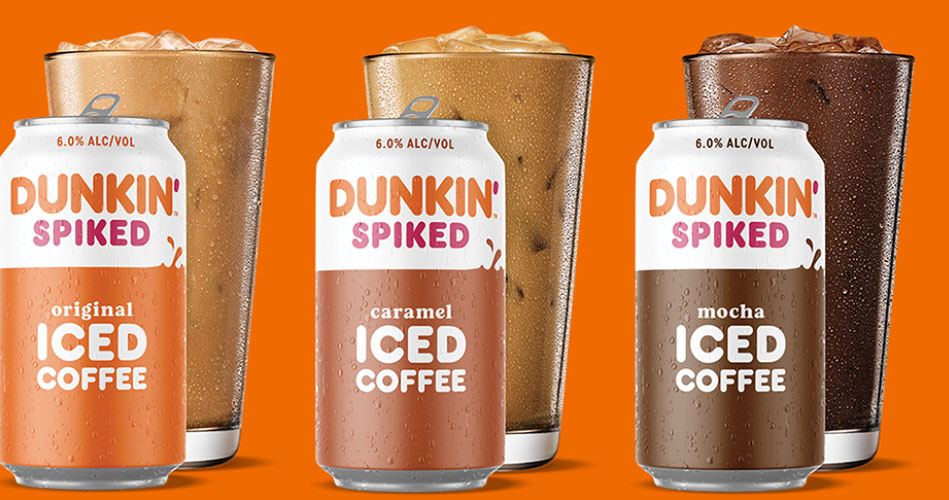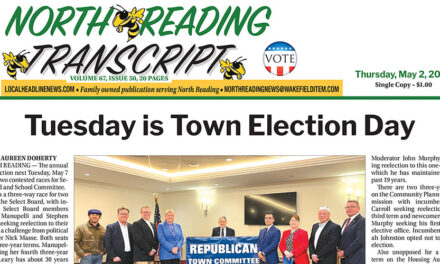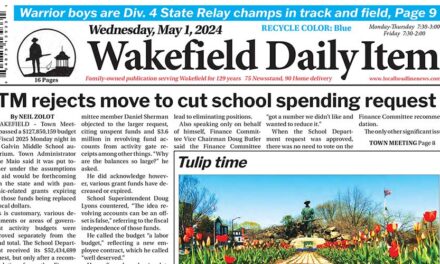Making An Impact is a column authored by members of the Community Impact Team (CIT). The Transcript publishes these articles periodically to inform our readers about the resources and programming available to people of all ages in our community through the CIT’s efforts.
NORTH READING — For parents, grandparents, and other caregivers who came of age during the five decades from the 1970s to early 2000s experimenting with substances might seem a rite of passage. But as the North Reading Youth Substance Use Prevention Coalition keeps close tabs on the ever-changing and increasingly risky substances available, it’s clear that purveyors of substances — both legal and illegal — use a more sophisticated bag of tricks to lure youth at a time when use can be more dangerous and addictive than ever before.
As many caregivers know, cigarettes have morphed to vapes (formerly known as e-cigarettes), which are marketed to entice minors to try vapes that deliver elevated levels of nicotine, making the product extremely addictive. Marketers feature advertising with youthful images and colors, animation, actors who appear to be under 21, and suggestions that vaping will make teens happier and improve their social status.
While parents may know to look out for vape pens that look like USB drives, manufacturers strive to stay a step ahead in luring youth and disguising vape pens as other commonplace items. Recently, manufacturers have produced vape devices that are nearly impossible to differentiate from legitimate highlighter pens used for schoolwork. While companies say their products are meant for age 21 and up, these devices are clearly intended to duplicate a marker regularly used by pre-teens and teens.
“The likeness of these products to a legitimate highlighter is so strong, it’s easy for a parent, grandparent, or other caring adult to unwittingly hand their child what they think is a highlighter that has fallen on the floor,” said Jen Ford, chair of the Coalition. “Caregivers should carefully examine even items that seem harmless.”
Likewise, Dunkin’ is branching further from its core coffee and donuts business. Last fall, Dunkin’ began offering spiked iced coffees and teas in 12 states, including Massachusetts. While the products are limited to establishments licensed to sell alcohol and require the purchaser to be 21 or older, the traditional Dunkin’ orange and pink packaging and typeface can attract youth who are accustomed to purchasing Dunkin’ beverages.
“It looks like a product many youth consume on a regular basis,” said Amy Luckiewicz, North Reading’s Drug-Free Communities Grant Director, “Even though these products are meant for adults, the familiarity of the packaging and a brand teens are accustomed to lowers the barriers for youth who might be considering experimenting with alcohol.”
In a recent visit to an eighth-grade health class by Luckiewicz and School Resource Officer Paul Lucci, Luckiewicz said a student commented that they wouldn’t have understood that the Dunkin’ product contained alcohol had they seen it in a convenience store, believing that “spiked” referred only to the caffeine in a coffee drink.
Today’s THC packs up to 14x’s the punch
In addition to these two examples, the legalization of marijuana and increased concentration of THC, the psychoactive component that causes a high, pose additional risk to youth. According to the National Institutes of Health, prior to the 1990s THC concentration in marijuana was generally about 2%. In the 1990s, it grew to 4%, but by 2017, the most popular strains found in Colorado dispensaries ranged from 17%-28%, making it much more potent — and dangerous — than the cannabis many adults might remember. The THC concentration in edibles and concentrated vapes can be even higher.
The Prevention Coalition encourages parents and other caregivers to talk to young people about the risks of vaping, marijuana, and alcohol, especially to the developing brains of adolescents, as well as how marketers directly appeal to young people to enrich their own bottom line.
Key risks of vaping include high concentration, addictive nicotine or marijuana that can impact the ability to focus, result in increased heart rate and blood pressure, and ultimately lung illness and death. High nicotine concentration can also enhance feelings of depression and anxiety.
Parents/caregivers can use some of the following conversation starters to discuss vaping with preteens and teens:
- I read an article today about vaping. Do you know what vaping is?
- My friend was telling me that her kid is getting awful peer pressure at school to vape. Have you ever felt pressured to vape?
- My friend told me she found a vaping device, and it made me wonder: Do you know what a vape looks like? Why is there an unusual odor on your clothes? (Vaping devices can produce distinct and often sweet-smelling vapors.)
- I noticed you are thirsty (Vaping can cause dehydration, leading to increased thirst).
TOOLS/PROGRAMS FOR PARENTS AND CAREGIVERS
Despite what parents may think, studies show they still are the number one influence over decisions children make. Likewise, children notice and emulate behaviors when parents themselves use substances.
A concerned parent who believes a child is addicted may consult a family physician or addiction clinician to discuss and develop a resolution. Assistance and referrals are also available through North Reading’s Mental Health Clinician Laura Miranda at lmiranda@nrpd.org or at 978-357-5038.
The North Reading Youth Substance Use Prevention Coalition and Community Impact Team encourage all residents to attend its ongoing educational programs aimed at fostering stronger family communications and sharing knowledge. A list of these programs and links to register are found at https://www.northreadingma.gov/community-impact-team/pages/events.
Among many topics, the North Reading Community Impact Team offers through its Noodles and Noggins series, instructors offer strategies for substance prevention and refusal skills. All workshops are free.





